It is a natural conjecture, but Ireland was an anchor point for the Atlantean Global sea trade that reached everywhere and inspired mining and pyramids. All available evidence suggests a veneration of the sun in all their known culture locations. This includes the Americas in paricular.
Ireland was also culturally isolated until the advent of Christianity. It could preserve their system until Christianity arrived. Thus it provides as good a snapshot as possible along with the Inca and the Aztec. Recall also that the earliest reports out of Anatolia tell us the same story.
The overlay of later doctrines has hidden all this, but the Atlantean world dominated through at least a thousand years everywhere during a time in which the non civilized lacked real mobility and posed little threat.
Baal worship is solar and is likely central to the Atlanteans. There has also been an overlay of slander folded into what we know so much can not be trusted there. Nothing so universal could actually sustain aberrations for long..
Was Prayer to the Ancient Solar Gods enough to Change the Renowned Irish Weather?
20 April, 2018 - 19:02
lizleafloor
https://www.ancient-origins.net/human-origins-religions/prayer-ancient-solar-gods-enough-change-renowned-irish-weather-009928
Ireland’s
history is rich in dramatic myth and mysterious legends. The
significance of the natural world, and most importantly the sun, was
obvious in the daily lives of the pre-Christian Irish.
Solar gods are found around the world, but, was the solar symbolism
strong in the damper, colder climates because it was (and remains) so
physically welcoming? Did the ancients of Ireland worship the sun gods
to try and improve the well-known foggy Irish weather in the hope for
more time in the blessed sun?
As Above, So Below
The brilliance and warmth of the sun was replicated on earth with
fires – sometimes loud, roaring fires that could be seen from afar.
These bonfires were likely not just a way to keep warm or illuminate the
night sky, but also served as a conduit between those on the ground and
the gods of the sun – and weather – in the sky, who, by their physical
manifestations on earth such as thunder, lightning, fog, rain, now,
clouds, and even eclipses, seemed very much in charge!
Irish sun gods, as in other mythologies, are usually portrayed as
strong and successful during the summer but will lose out to forces of
winter when their radiance and power is on the downswing. They are often
depicted with shining, golden hair, and fly across the sky in
horse-drawn chariots, shooting arrows of light at their quarry. They are
friends or helpers to mankind, and champions against darkness and
demons of the night.
The Mysterious Origins and the Birth of Celtic Solar Gods
Modern archaeologists and historians continue to piece together the
prehistoric puzzle of ancient sites, ancient gods, and solar worship of
the Celtic world. How did worship of the solar gods come to be in a land
with a reputation of seeing so little? A complication in the quest for
answers, says writer and researcher of prehistoric sites of Ireland,
David Halpin, is that the solar gods and goddesses we are familiar with
today came after many of the solar-aligned sites were already
constructed. Halpin says that, unfortunately, after Ireland’s ancient
monuments were constructed, something happened, and the original
builders seemed to have disappeared. When people arrived years later,
they likely associated their own gods with these places. That leaves
many questions unanswered about the genesis of the solar gods – and the
creation of the incredible monuments found across the landscape.
That being said, Halpin notes there are many sites in Ireland which
begin with the word Bal/Baal/Bel (such as the Baltray standing stones,
or Beltany Tops stone circle) which have sunrise and sunset alignments,
and names to suggest they were sites originally dedicated to a sun god.
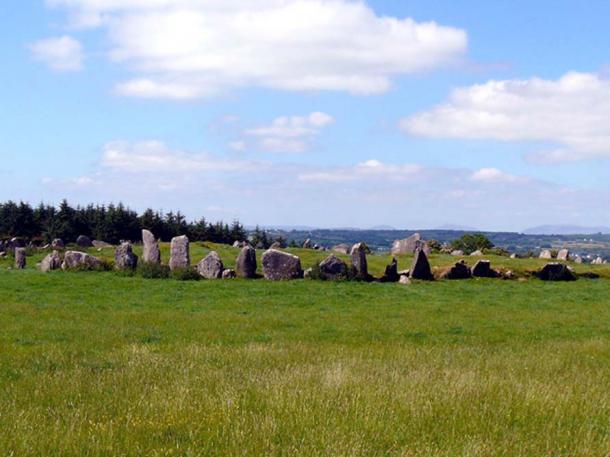
Belenus/Bel is a sun god often associated with the Baal of the
Fertile Crescent (the region in the Middle East which curves from the
Persian Gulf, through modern-day southern Iraq, Syria, Lebanon, Jordan,
Israel and northern Egypt) and Anatolia. In Margaret Anne Cusack’s
examination of sun worship in An Illustrated History of Ireland , she too connects the name Bel, still present today in the Celtic Beltane, to a Phoenician origin.
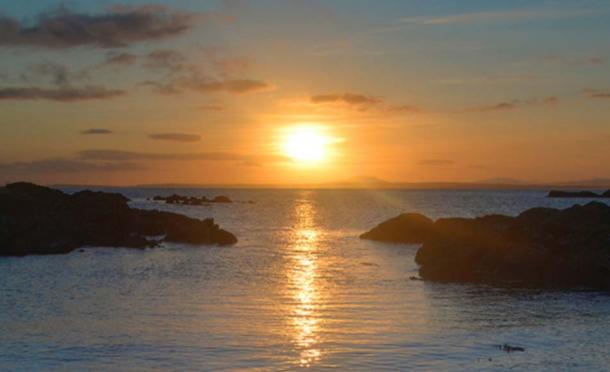
With the coming of St. Patrick, a missionary credited with converting
Ireland to Christianity in the AD 400s, old gods, solar gods and sun
worship was denounced, and quashed.
St. Patrick is recorded to have said of the sun, “All who adore him
shall unhappily fall into eternal punishment. Woe to its unhappy
worshippers, for punishment awaits them. But we believe in and adore the
true Sun, Christ!”
It was not a complete transition, as belief in the old gods and
elements of solar and nature worship in Ireland can still be seen to
this day.
Gods and Goddesses
In Irish, the sun is given a feminine name, Grian, even as there are
both male and female deities connected with the sun in today’s Celtic
mythology. Perhaps originally there were only solar goddesses, and the
male gods were later attributed as sun gods by their identification with
the Roman Apollo, god of sun, light, and knowledge.
Grian is the winter sun, and her sister or dual nature is Áine, the
summer sun. Áine is the goddess of wealth, with power over crops and
animals, and she is sometimes represented by a red horse.
Followers,
even as recently as 1879, would hold rites in honor of Áine involving
fire and blessings at the the hill of Knockainey ( Cnoc Áine ), County Limerick.
Brighid appears as a member of the Tuatha Dé Danann , a supernatural race containing the main gods of pre-Christian Ireland.
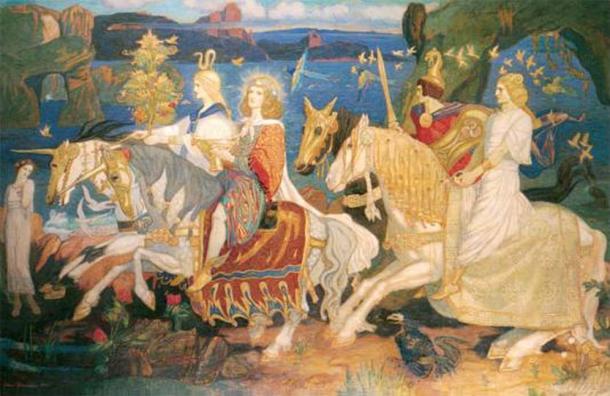
The Tuatha Dé Danann as depicted in John Duncan's "Riders of the Sidhe" (1911). ( Public Domain )
She is a ‘triple goddess’ associated with an early spring equinox,
light, and fire. It is believed she may be a continuation of an
Indo-European dawn goddess. As many of the stone circles across the
country have an alignment at this time of the year, it suggests the
sites may have a female association. Good weather, and an early spring,
would serve the people well, so Brighid’s festival day, Imbolc is
traditionally a time for foretelling or forecasting the weather.
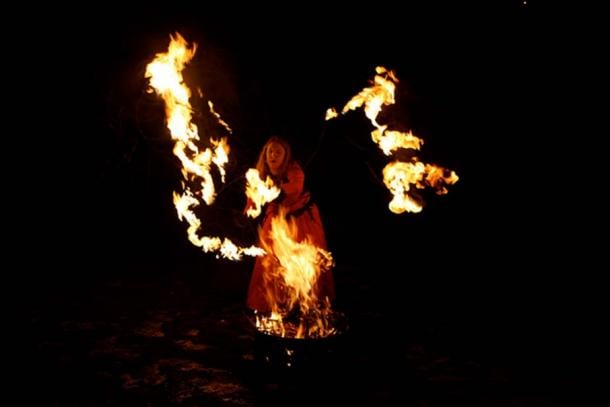
Brighid is celebrated with fire at a festival. (Mike Wright/ CC BY-ND-2.0 )
Other female Celtic gods bear solar traits, such as the British
Sulis, who was worshipped as a life-giving mother at the thermal spring
of Bath. For being a sun-god, her followers seemed to have dealt in the
dark, as about 130 curse tablets wishing misery upon foes, and addressed
to the powerful lady, were found at the sacred spring. Offerings like
money or clothing were left to Sulis at the baths, and her popularity as
an agent of change for worshippers continues among Wicca and Pagan
communities.
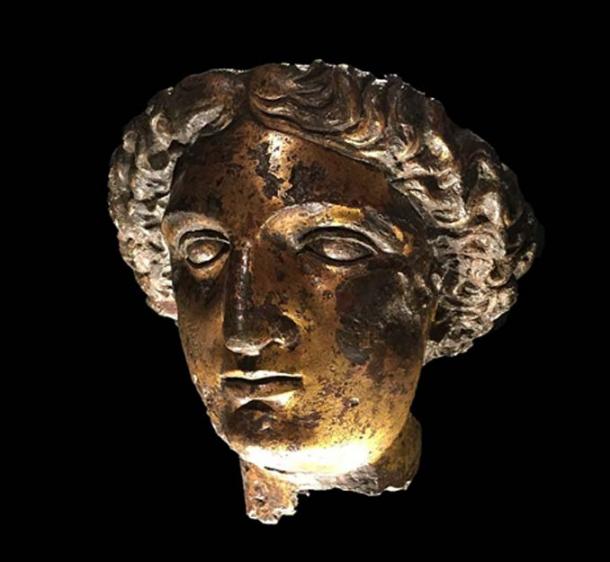
Gilt bronze head from the cult statue of Sulis Minerva from the Temple at Bath. (Hchc2009/ CC BY-SA 4.0 )
A skilled and youthful warrior, Lugh (Lug) is also king and savior.
He is sometimes believed to be a lightning/thunder god, or sun god, and
so powerful by nature that mountains are named after him. A member of
the Tuatha Dé Danann , he is linked to many famous legendary
figures, including his son, the ultimate Irish warrior hero Cú Chulainn.
His solar-god status seems to be a Victorian-era connection, as his
name derives from the Proto-Indo-European words “flashing light”. Lugh
was worshiped throughout the Celtic world and was popular among all
classes of people from farmers to kings.
Belenus, the ‘Fair Shining One’, or ‘Shining God’, was a
widely-worshipped ancient solar deity.
Associated with the horse and the
wheel, he rides across the sky in a wild, horse-drawn chariot.
Solar Doorways and Fires for the Gods
Older than the Egyptian pyramids of Giza, older than Stonehenge, Ireland’s Newgrange ( Sí an Bhrú )
has prehistoric roots and a fascinating mythology. The massive monument
in County Meath, and seated near the River Boyne, dates to 3200 BC. It
is identified as a passage tomb; an earthen mound with a long passageway
and chambers, with a stone circle ringing it.
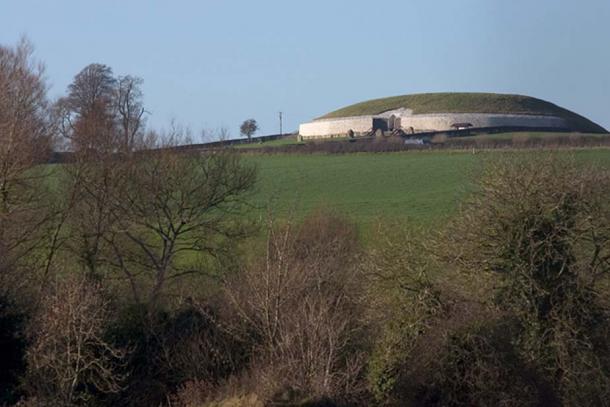
Newgrange at a distance. County Meath, Ireland. (Jimmy Harris/ CC BY 2.0 )
Journalist and astronomer Anthony Murphy told Ancient Origins that
Newgrange contained both cremated and uncremated remains, and today’s
archaeologists, while not prepared to change the description of the site
from ‘passage tomb,’ acknowledge the monument likely had many different
purposes. Rather than simply being a tomb, it is felt that solar
worship could have taken place there, and there’s easy proof to that.
When the sun rises on the shortest day each year, winter solstice,
the illuminating beams shine directly down the long passage, and fill
the inner chamber with light, brilliantly revealing the swirling
carvings on the walls of the chamber – most notably a triple spiral. The
sunlight pours in through a clever roofbox, a purpose-made opening
above the main entrance. Newgrange is one of the very few passage tombs
to feature this special roofbox.
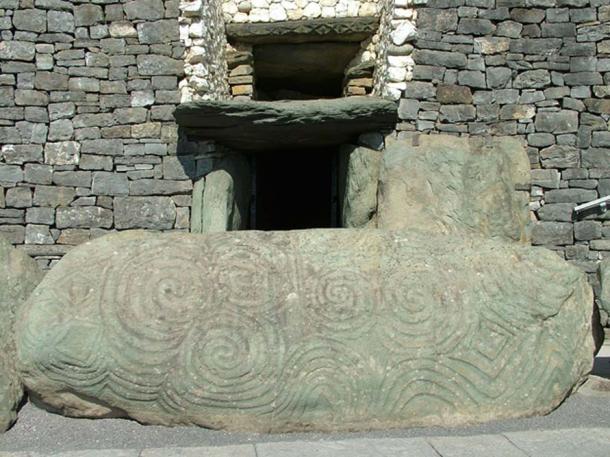
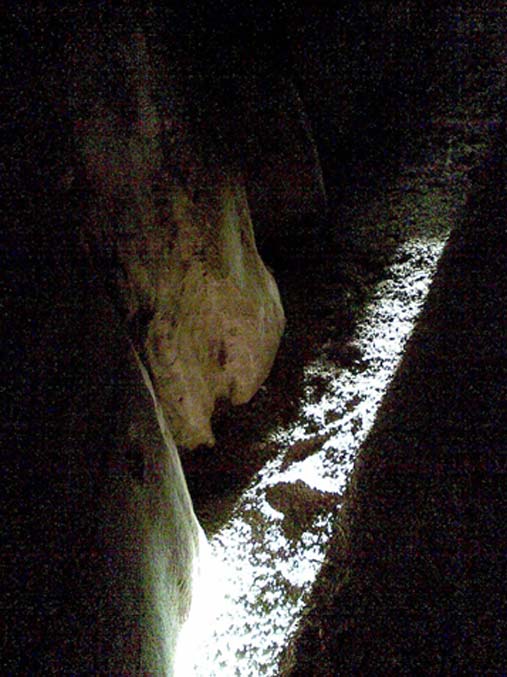
A shaft of light at the Newgrange Passage Tomb (Dentp/ CC BY-SA 4.0 )
Newgrange and the surrounding Boyne monuments in nearby Knowth and
Dowth all feature solar alignments, showing that these beliefs were
strongly-enough held to create adept and amazing astronomical devices
and places of worship. An impressive site, it is imbued with millennia
of folklore. In some Irish myths, the monuments were gates or portals to
lands of the gods, and this is where Cú Chulainn was born.
The Spreading Flames of Protection and Worship
In Meath, a hotbed of prehistoric ritual, and not far from the famous
Royal Hill of Tara are ancient sites of Hill of Uisneach, and Tlachtga
(Hill of Ward).
The Hill of Uisneach is believed in legend to be the site of the
first great Beltane fire to be lit in all of Ireland. Beltane, (held
commonly on May 1, halfway between the spring equinox and the summer
solstice), is one of the four Gaelic seasonal festivals.
World Heritage Ireland writes: “To usher in the first dawn of summer
in May, the Uisneach hearth burned biggest and brightest of all; visible
to over a quarter of Ireland. Hearths were extinguished in every Irish
home and fireplace in the country, in anticipation of a new flame from
Uisneach’s Bealtaine fire. It must have been an extraordinary sight,
with the country plunged into utter darkness ahead of this sacred
festival. Using the flame from Uisneach, fires were then ignited on the
other sacred hills of Ireland. When lit, they created a unique ‘fire
eye’ over the island, ushering in an entire summer of sunshine.”
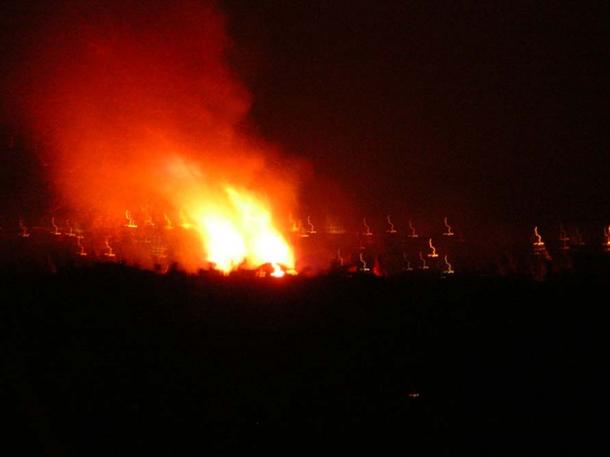
The bonfire lit to welcome Beltane morning. Edinburgh 2008. ( Public Domain )
Uisneach is steeped in solar mythology, as it is said to be the location where Lugh met his end.
Dagda, leader of the Tuatha Dé Danann was believed to live
at Uisneach and stabled his ‘solar horses’ at the site. Interestingly, a
wheel-shaped enclosure was uncovered here, which concealed two
underground cavities. One was in the shape of a divine mare being
pursued by a galloping stallion.
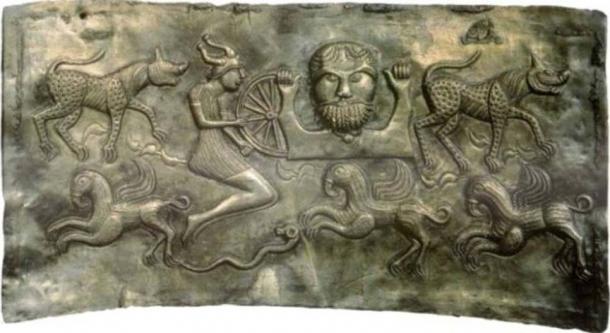
Winter is Coming
Tlachtga was a powerful druid in Irish mythology, associated with the
Hill of Ward, County Meath, a center of Celtic religious worship over
two thousand years ago. Tlachtga’s father, Mug Ruith was said to fly
across the sky in a flying machine, roth rámach . Such feats, and a very long lifespan, signaled him to be a sun god.
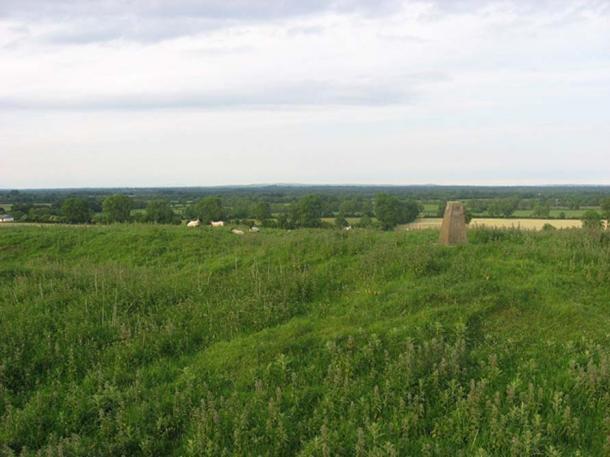
The major ceremony held at Tlachtga was the annual lighting of the
winter fires at Samhain (November 1). This Great Fire Festival signaled
the onset of winter, and these energetic blazes on the hill would
reassure that the approaching time of darkness would be overcome. The
warmth and light of the fire must have felt like a powerful physical
connection to a solar god, and a bolstering of hope in uncertain times
of darkness and cold, wet winds.
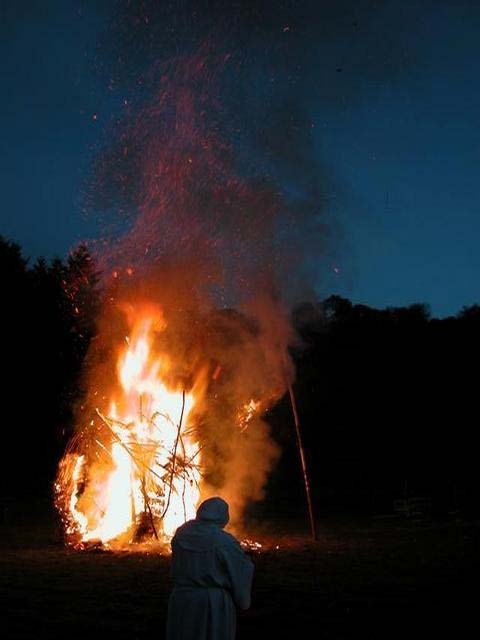
A ritual bonfire demonstrates the ancient Celtic way of life. (Martyn Pattison / Beltain Festival at Butser Ancient Farm / CC BY-SA 2.0 )
Because prehistoric dedication to solar gods and worshiping of the
sun is simply, as 19th-century historical writer James Bonwick notes,
“the reverent bowing to the material author of all earthly life,” we
cannot condemn those who admired the sky; those who created such
memorable, shining gods, and the awe-inspiring monuments and megaliths
of ancient Ireland. Indeed, if it made a difference in the island’s
renowned changeable weather, so the better.
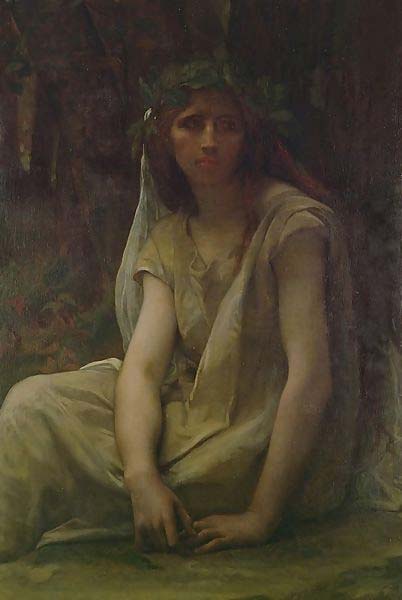
The Druidess, oil on canvas, by French painter Alexandre Cabanel (1823–1890) ( Public Domain )
--
Top image: Solar gods were worshiped in prehistoric Ireland. (Public Domain/Deriv)
By Liz Leafloor
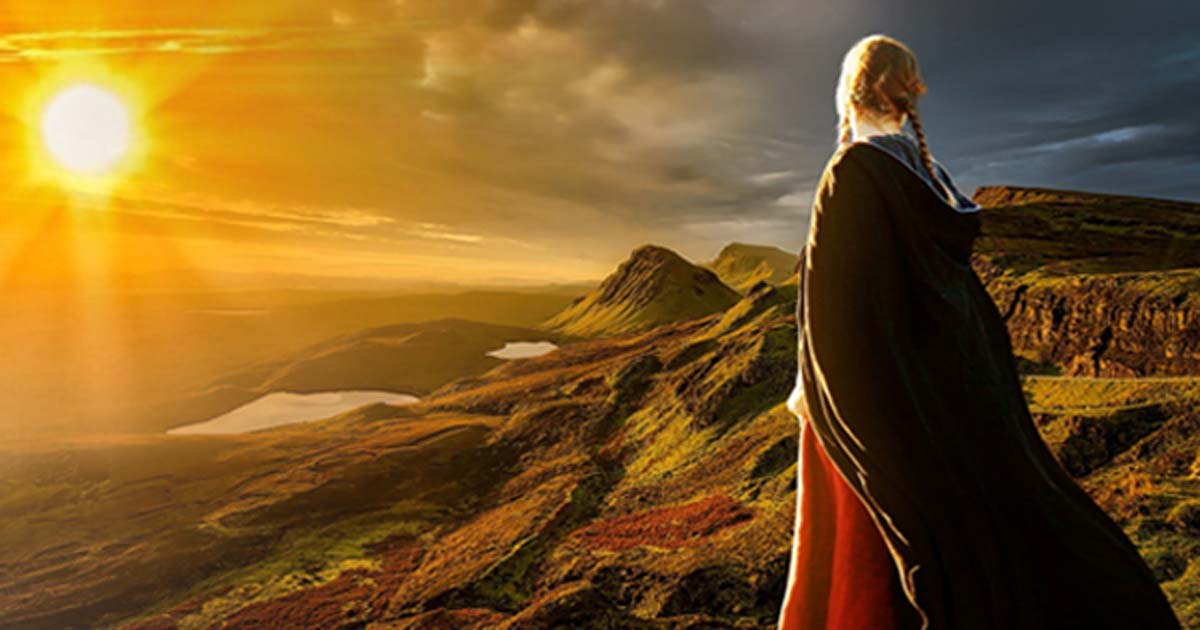
No comments:
Post a Comment